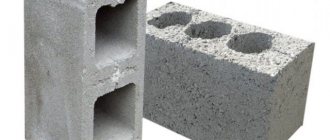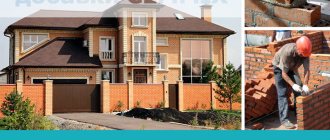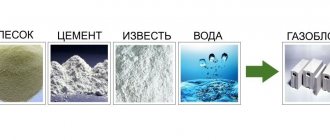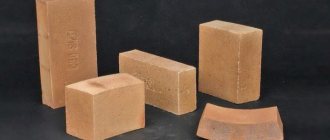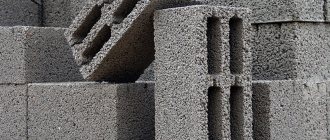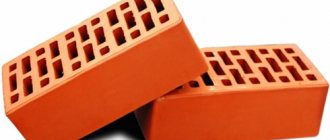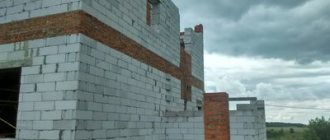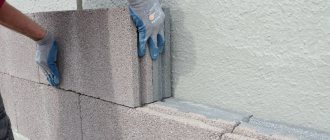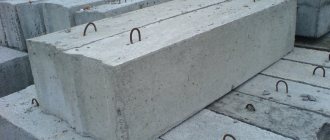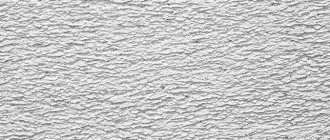Gas silicate brick is gaining enormous popularity as the main building material. Its technical characteristics and properties allow the construction of efficient buildings that meet all modern standards. If we talk about the price-quality ratio, then we can confidently say that gas silicate blocks occupy one of the first places.
The material has already been time-tested and successfully performs its functions. It is used for the construction of all types of structural elements of structures and buildings for any purpose. Why have gas silicate blocks become so popular? How do they differ from classic building materials? What makes them special? You will find answers to these and many other questions in the article.
Gas silicate production technology
For its production, a mixture of cement, slaked lime and sand is used, which is passed through an autoclave and foamed by adding aluminum powder or magnesium dust.
The finished mass of gas silicate is poured into molds and blocks with certain dimensions are formed. Drying and hardening is carried out in two ways:
- under natural conditions;
- in an autoclave under high temperature and pressure conditions.
The autoclave method makes it possible to obtain blocks with improved properties in terms of hardness and resistance to adverse conditions.
Equipment for the production of gas silicate bricks.
A simple composition of cheap and common components makes aerated silicate brick economically viable for mass construction.
Gas silicate groups by properties and scope of application:
- Bricks of the D200-D400 brand are distinguished by good thermal insulation properties and frost resistance, but low strength. Their scope of application is wall insulation and filling of openings during monolithic construction.
- The D500-D600 brand has average characteristics; these are durable blocks that are suitable for the construction of boxes for low-rise buildings and cottages.
- The D700-D900 brand has the highest strength; such blocks are particularly resistant to adverse conditions and durable.
What it is?
To put it as simply as possible, aerated silicate brick is one of the types of porous concrete. The resulting material is quite porous, but at the same time its strength characteristics fully correspond to the parameters of concrete. The main difference is the weight. Gas silicate blocks are less heavy - the reduction in the parameter is achieved due to the voids inside the pores.
In the 18th century, builders often added the blood of a bull or pig to concrete and obtained a prototype of modern aerated concrete: when mixing the components, the blood protein entered into a chemical reaction with other substances, and as a result, foam appeared, which, when hardened, was transformed into a durable building material.
One of the most famous engineers in the Soviet Union, M. N. Bryushkov, noted back in the 30s of the last century that when a squeeze of a plant called “soap root”, growing in the republics of Central Asia, is added to cement, the mixture immediately begins to foam strongly and increase in size. During solidification, the porosity was maintained, and the strength increased significantly. However, the most significant role in the creation of gas silicate was played by the Swedish technologist Albert Erickson, who created a unique technology for producing the material by adding gas-forming chemical components to cement.
Today, gas silicate bricks are made from cement with the addition of sand and slaked lime. The mixture is then passed through autoclaves and foamed with the addition of special magnesium dust and aluminum powder.
The finished substance is poured into molds, dried and hardened, which is achieved in two main ways:
- in natural conditions;
- in an autoclave under high temperature and strong pressure.
Better quality blocks are obtained by autoclave drying. In this case, they become more durable and resistant to external adverse conditions.
Thus, it can be seen that the gas silicate block is a rather simple composition of inexpensive and widely sold components, so the material is quite beneficial for residential construction.
Characteristics of gas silicate
Gas silicate blocks, the characteristics of which will be discussed below, can be produced by non-autoclave and autoclave methods. The first involves freezing the working mixture under natural conditions. The material, at the same time, turns out to be cheaper, with worse strength characteristics and higher shrinkage.
Blocks made using more energy-intensive and technologically advanced autoclave production may have better properties.
In addition to the density already discussed, the main characteristics of this material are thermal conductivity and frost resistance. Blocks of the structural type have the lowest thermal conductivity, while blocks of the thermal insulation type have the highest. As for the frost resistance of gas silicate blocks, this parameter directly depends on their structure and cellularity.
Brick finishing of aerated concrete houses
When choosing a material and method of exterior finishing of aerated concrete walls, many developers consider the option of facing them with brick. Significant investments pay off by increasing the insulation characteristics of the building, providing reliable protection from external influences, strengthening structures and extending their service life. The disadvantages of this method include increasing the load on the foundation and covering the blocks with a layer with low vapor permeability. The finishing masonry technology is considered simple, but requires some experience; the layout of the pie depends on the type of construction; different types are selected for residential and unheated houses.
Don’t overpay for extra cubic meters
Time to work, time to rest
Building a house outside the city from aerated concrete blocks will require accurate calculations of building materials. No one will count them individually; it is necessary to decide how many blocks are in a cube of aerated concrete, how many cubes are needed for complete construction. The building can be one or two storeys, so the calculations will be individual for each specific case.
Two-story house with openings for windows and doors
How many aerated concrete blocks in a cube with standard dimensions 600x300x200 need to be purchased to build a not very large building? Mathematics is an exact science, but it allows for rounding.
Aerated concrete: the number of pieces in a cube will determine the dimensions of length, width, height
For correct calculation, the following formula is used: (L x H - Spr) x 1.05 x B = V, where
- L – total length of all walls made of aerated concrete blocks, m;
- H – average height of aerated concrete walls, m;
- Spr – total area of door and window openings, m²;
- 1.05 – safety factor for trimming;
- B – block thickness, m;
- V – calculated volume, m³.
How many aerated concrete blocks are there in a cube, if the products have this configuration
The given formula is of a recommendatory nature.
Containers, cubes, pieces, weight of aerated concrete
Different sizes of aerated blocks are important when building a house
The video in this article will help you understand that when choosing aerated concrete blocks, you must take into account the following criteria:
- What will be the load on the walls (5 floors and 25 – a big difference);
- Coefficient of thermal conductivity;
- Deviation by parameters;
- Correctly calculate how many squares are in a cube of aerated concrete so that during construction the proportionality of the masonry is maintained and the whole process is simplified.
Different configurations of gas blocks ensure safe operation of facilities
The dimensions and configuration of aerated concrete blocks affect their quantity when stacked on pallets. How many cubes of aerated concrete are in a pallet, and what types of pallets are there?
- For transportation, pallets of 3 types are used: 0.9 m³, 1.44 m³, 1.8 m³. Different numbers of aerated concrete blocks are placed on different pallets.
- With a simple arithmetic operation, you can determine how many cubes can fit in one pallet of aerated concrete blocks with standard dimensions of 600 x 300 x 200 mm (60x30x20 cm).
- The product of sides with dimensions of 100 cm is 1,000,000 cm³ or 1 m³, the volume of the block is 60*30*20 = 36,000 cm³ or 0.036 m³. By dividing 1 m³ by 0.036 m³, we get 27.7 blocks in one cubic meter.
- Now let's return to pallets, which are divided into standard and non-standard. Aerated concrete: number of pieces per cube with standard volumes of 0.9 m³: 0.036 m³ = 25 pieces; 1.44 m³: 0.036 m³ = 40 pcs.; 1.8 m³: 0.036 m³ = 50 pcs.
Number of square, cubic meters and blocks on a pallet
- The principle of calculating non-standard modules on non-standard pallets is somewhat different from standard calculations. A construction worker will quickly make simple calculations by measuring the volume of aerated concrete blocks laid on a non-standard pallet. In practice, it looks like this: the dimensions of the pack are 1 m in width, 0.8 m in length, 1.2 m in height, their product gives 0.96 m³. The linear indicators of the block in question are 0.6x0.3x0.2 = 0.036 m³. 0.96 m³ : 0.036 m³ = 26.6 pcs.
- This is a clear example of the fact that when purchasing one pack of gas blocks, the loss will be 0.6 volumetric indicator, because the manufacturer places entire products on pallets. Large orders take into account these shares, which can add up to impressive numbers.
- The photo shows different configurations of aerated concrete blocks, having different densities, and therefore weight and price.
- The weight of one block is calculated by multiplying the volume of the module by its density indicated in the labeling. For example, the weight of a module of 0.036 m³ with a density of 500 kg/m³ will be 18 kg.
The table will help you avoid wasting time on calculations
Upon receipt of the order, you must manually compare the calculated values with the numbers indicated in the accompanying documents. Why is this being done? There are many facts about the presence of industrial waste in modules, which are used as fillers. Checking the weight will indicate their presence in the modules and the low quality of the product.
How many cubes of aerated concrete are in a pallet and what quality it is can be determined without resorting to the services of specialized laboratories. Buildings made from aerated concrete blocks will last for many years, their characteristics indicate this.
Size chart of the best blocks 625 mm long
| Bonolit, Kaluga aerated concrete, Poritep, Aerostone | in the car (cubes) | ||||||
| Size LxHxW | Volume in m3 | Quantity m3 | Quantity per pallet (pcs) | Pallet volume (m3) | D400 D400 | D500 D500 | D600 D600 |
| 625x200x75 | 0,0093 | 108 | 200 | 1,875 | 35,62 | 31,87 | 28,12 |
| 625x200x100 | 0,0125 | 80 | 150 | 1,875 | 35,62 | 31,87 | 28,12 |
| 625x200x125 | 0,0156 | 64 | 120 | 1,875 | 35,62 | 31,87 | 28,12 |
| 625x200x150 | 0,0187 | 53 | 100 | 1,875 | 35,62 | 31,87 | 28,12 |
| 625x200x200 | 0,025 | 40 | 80 | 2 | 36 | 32 | 28 |
| 625x200x250 | 0,0312 | 32 | 60 | 1,875 | 35,62 | 31,87 | 28,12 |
| 625x200x300 | 0,0375 | 27 | 50 | 1,875 | 35,62 | 31,87 | 28,12 |
| 625x200x375 | 0,046875 | 21 | 40 | 1,875 | 35,62 | 31,87 | 28,12 |
| 625x200x400 | 0,05 | 20 | 40 | 2 | 36 | 32 | 28 |
| 625x200x500 | 0,0625 | 16 | 30 | 1,875 | 35,62 | 31,87 | 28,12 |
| 625x250x50 | 0,0078 | 128 | 240 | 1,875 | 35,62 | 31,87 | 28,12 |
| 625x250x75 | 0,0117 | 85 | 160 | 1,875 | 35,62 | 31,87 | 28,12 |
| 625x250x100 | 0,0156 | 64 | 120 | 1,875 | 35,62 | 31,87 | 28,12 |
| 625x250x125 | 0,0195 | 51 | 96 | 1,875 | 35,62 | 31,87 | 28,12 |
| 625x250x150 | 0,0234 | 43 | 80 | 1,875 | 35,62 | 31,87 | 28,12 |
| 625x250x250 | 0,039 | 26 | 48 | 1,875 | 35,62 | 31,87 | 28,12 |
| 625x250x300 | 0,0468 | 21 | 40 | 1,875 | 35,62 | 31,87 | 28,12 |
| 625x250x400 | 0,0625 | 16 | 32 | 2 | 36 | 32 | 28 |
| 625x250x500 | 0,0781 | 13 | 24 | 1,875 | 35,62 | 31,87 | 28,12 |
Advantages and disadvantages of gas silicate blocks
Any building material has characteristic advantages and disadvantages that determine the scope of its application. Let's take a closer look at the pros and cons of the GSB.
Advantages of aerated concrete
The main advantages of gas silicate blocks include:
- moderate weight
. For comparison, a concrete block of similar volume weighs 5 times more. This allows you to relieve the foundation, and also simplifies delivery and installation; - high compressive strength of products
. For a D500 block, this figure is 40 kg/cm2; Such strength allows you to build even 5-story buildings; - unique thermal insulation properties.
According to this indicator, GSB is 8 times superior to its concrete counterparts; - porous block structure.
This structure increases the soundproofing characteristics of the material. According to this criterion, GSB is 10 times superior to brick; - environmental safety
. Gas silicate blocks are made from natural materials, do not cause allergic reactions and do not emit toxic compounds into the atmosphere; - high degree of fire safety.
GSB not only do not burn, but also prevent the spread of fire. - high vapor permeability
. This parameter for aerated concrete is comparable to that of natural wood. The presence of this property allows you to create a healthy, comfortable microclimate in the room.
Cons of gas blocks
Along with the significant advantages of GSB, they also have significant disadvantages:
- Low mechanical strength
. It is not recommended to hang heavy pieces of furniture on a wall made of aerated concrete blocks, since when the fasteners are hammered in, the blocks can crumble and crack; - Low frost resistance
. With sharp temperature fluctuations, the structure of the material may be destroyed; - Increased water absorption.
The porous structure of GSB promotes intense moisture absorption, which negatively affects the strength and durability of the material when the temperature drops; - Low degree of adhesion to cement-sand plasters
. Applying such plaster compositions to the surface of aerated concrete is fraught with peeling. The use of gypsum polymer mixtures for external work is also undesirable, since such compositions do not tolerate temperature changes;
Despite the disadvantages listed above, due to their advantages and affordable cost, GSB are widely used in private construction. Let's look at a few examples.
Expert advice
Working with gas silicate blocks does not require a high level of skill; basic knowledge and following all stages of the instructions are enough, so you can build the necessary structure with your own hands.
Let's look at some tips from experts in the construction field:
- When choosing blocks, give preference to blocks with ideal geometry - the surface is flat, smooth, uniform in color, all lines and angles are straight;
- Mixing the adhesive solution should be done with a construction mixer or drill; mixing the mass by hand does not guarantee the homogeneity of the adhesive;
- In summer, the surface of the blocks is wetted with water; in winter, the bricks are preheated;
- Construction always starts from a high angle.
Gas silicate blocks have been used for a long time in all areas of construction; they have a large list of advantages, among which are thermal insulation, speed of operation, ease of installation and affordable cost.
Composition and production technology of gas silicate blocks
The mixture for the production of gas silicate blocks has the following composition:
- binder (Portland cement according to GOST 10178-76, calcium lime (according to GOST 9179-77);
- silicate or siliceous filler (quartz sand with 85% quartz content, fly ash, etc.);
- lime, with a content of magnesium and calcium oxides of more than 70%, and a slaking speed of up to 15 minutes;
- technical water;
- gas-forming additive (aluminum powder and others).
Gas silicate belongs to the class of lightweight cellular concrete. This material is a mixture consisting of 3 main components: cement, water and fillers. Lime and quartz sand in a ratio of 0.62:0.24 can act as fillers. We should also talk about the additives that give gas silicate its individual characteristics. Fine aluminum powder acts as an additive. All these components are thoroughly mixed, and under certain conditions, foaming of all these materials occurs. When aluminum powder reacts with lime, hydrogen is released. The huge number of hydrogen bubbles released makes up the porous structure, which is the main distinguishing feature of gas silicate. Its structure resembles a concrete “sponge”, since the entire volume of the block consists of cells (bubbles with a diameter of 1-3 mm).
Gas silicate blocks
The cellular structure makes up almost 85% of the volume of the entire block, so this material is very light in weight. First, a mixture of components is prepared in a special mixer for 5 minutes, which includes Portland cement, fine sand (quartz), water, lime and a gasifier (most often, this is an aluminum suspension). Hydrogen produced by the reaction between aluminum paste (powder) and lime forms pores. Bubbles ranging in size from 0.6 to 3 mm are evenly distributed throughout the material.
Basic chemical reactions take place in metal containers or molds. The mixture is subjected to vibration, which promotes swelling and setting. After hardening, all surface irregularities are removed with a steel string. The formation is divided into blocks, and then they are sent to an autoclave unit. The final calibration of the finished blocks is carried out by a milling machine.
Gas silicate blocks are manufactured only using the autoclave method. Aerated concrete blocks can be produced both by autoclave and non-autoclave methods (natural hardening of the mixture):
- Autoclave processing. This stage significantly improves the technical characteristics of gas silicate. Here, steam treatment is carried out for 12 hours at high pressure, the temperature of which is almost 200°C. This heating process makes the texture more uniform, thereby improving the strength properties (at least 28 kgf/m²). Its thermal conductivity is 0.09-0.18 W (m∙K), which makes it possible to erect walls in one row (400 cm) in almost any climatic conditions, but excluding the northern regions.
- Non-autoclave technology. It consists in the natural hardening of the mixture: moistening and drying under natural conditions. In this case, it is quite possible to do it yourself, since no special equipment is required. The strength of blocks in such production does not exceed 12 kgf/m².
The first type is more expensive. This is due to significant manufacturing costs, as well as the best technical characteristics of gas silicate blocks produced by this method. They are much stronger, their thermal conductivity coefficient is lower. The pores inside such gas silicate are distributed extremely evenly, which affects the precise compliance of the material with the specified parameters.
Selecting a mixture for installation work
To work with gas silicate products, several options for the binding solution are offered:
- Mortar based on cement and sand;
- Special glue.
The cement mixture is the simplest and most affordable option, the price of the ingredients is quite low, you can prepare the mixture yourself - 1 part cement, 3 parts sand and water, the mixture is thoroughly mixed until smooth.
But the cement-sand mixture has a big disadvantage - the appearance of “cold bridges”, the room quickly cools, so it is not worth building a residential building using this solution alone; it is better to use it for the construction of garages, fences, industrial buildings, etc.
Special glue - for the installation of gas silicate blocks, preference should be given to glue for deep penetration cellular concrete. It is characterized by high levels of durability, moisture resistance, resistance to mold and fungal diseases.
The glue is sold in a building materials store in a tightly sealed package, which contains exact instructions for preparing the solution.
When choosing a mixture, it is necessary to give preference to plastic solutions that have good moisture resistance and resistance to temperature changes, and also have adhesive properties.
Weight and dimensions of aerated silicate bricks
If we compare this type of brick with the usual one
...then with the naked eye you can see that it is much larger in size. Due to this, the speed of building houses increases significantly. It is also worth noting that the number of joints and seams is reduced. This nuance allows you to reduce labor costs and mortar consumption for laying blocks.
The size of aerated silicate bricks has the following indicators: length, width and thickness. The usual size of gas silicate bricks for laying walls has the proportions of 600 × 200 × 300 mm. In addition, there is a semi-block wall brick with dimensions of 600 × 100 × 300 mm. Manufacturers produce products in various sizes, for example: 588×150×288 mm, 500×200×300 mm, etc.
As you can see, the variety of sizes is impressive, so you shouldn’t have any difficulties in selecting what you need exactly for your construction project. Knowing the thickness of the gas silicate brick, its height and length, you can make a calculation to compare the amount of conventional brick and gas silicate brick required for building a house. With a standard brick size of 250 × 120 × 65 mm and gas silicate 600 × 200 × 300 mm, the volume of the first material will be equal to 0.00195 m3, and the second - 0.036 m3. When dividing, we get the indicator that 1 gas silicate block is equal to the amount of bricks of 1.85 pieces. Thus, for 1 m3 it is necessary to take 27.7 blocks and 512 bricks.
The weight of aerated silicate bricks depends on the size and density. The higher the indicators, the greater the weight. An ordinary gas silicate brick weighs approximately 21 -29 kg. Compared to bricks, whose mass per 1 m3 of bricks is: 512 pieces × 4 kg = 2048 kg.
Gas silicate block - how many bricks?
When using this formula to calculate 1 m3 of gas silicate, we get the result: 27.7 × 21 = 581.7 kg. As you can see, the difference is huge. Of course, this is largely influenced by the structure of gas silicate bricks.
Technical characteristics of gas silicate bricks.
Distinctive features of the material are:
- Density;
- Heat conductivity;
- Resistance to sub-zero temperatures.
Product density marking:
- D400 and less - products that are used as a material for thermal insulation of walls;
- D600 - D500 - indicators indicate a material with medium density, which is used to build a house made of aerated silicate brick on 1 - 2 floors and install interior partitions;
- D700 is a material with a high level of density, used for the construction of multi-storey houses and buildings.
Gas silicate brick with a high level of density has indicators of 0.18 - 0.20 W/m°C, and this is significantly lower than that of red brick. Blocks with average density have indicators of 0.12 - 0.18 W/m°C. And finally, gas silicate with the lowest density has a thermal conductivity index of 0.08 - 0.10 W/m°C.
Note. For comparison, the thermal conductivity of wood is 0.11 - 0.19 W/m°C. Gas silicate brick has a higher rate. In addition, products of this type have the ability to breathe. These indicators refer to dry material, while the thermal conductivity of wet material increases.
Resistance to sub-zero temperatures is directly dependent on the pore size in the material. Typical blocks that are produced in a natural environment can withstand from 15 to 35 freeze/thaw cycles
Autoclaved gas silicate brick has higher frost resistance, designed for 50 - 100 cycles
If we take into account GOST 25485-89, the average number of freezing/thawing cycles of gas silicate is no more than 35
Advantages
The positive characteristics of gas silicate bricks are:
- simplicity and ease of installation work;
- convenient mechanical processing;
- the open type of cell structure of the building material creates excellent vapor permeability, making moisture exchange optimal;
- excellent sound and noise insulation qualities.
Compared with ordinary bricks, gas silicate is very popular today.
Where are gas silicate blocks used?
The scope of application of gas silicate lies in the following areas:
- thermal insulation of buildings,
- construction of buildings and load-bearing walls,
- insulation of heating networks.
In terms of their qualities, gas silicate blocks have much in common with foam concrete, but at the same time they surpass them in mechanical strength.
Depending on the density of the material. There are several areas of application:
- The density of the blocks from 300 to 400 kg/m3 greatly limits their distribution, and such blocks are more often used as insulation for walls. Their low density does not allow them to be used as a basis for walls, since they will collapse under significant mechanical load. But low density plays a role as insulation, since the more tightly the molecules adhere to each other, the higher the thermal conductivity becomes and it is easier for the cold to penetrate into the room. Therefore, blocks with low thermal conductivity provide more effective thermal insulation,
- blocks with a density of 400 kg/m3 have found their use in the construction of one-story buildings and work premises. Due to the increased strength of the blocks and their lower weight, the cost of arranging the foundation is significantly reduced,
- blocks with a density of 500 kg/m3 are more often used in the construction of buildings several floors high. As a rule, the height of the building should not exceed three floors. Such blocks, directly depending on the climate, are either not insulated at all or require traditional insulation methods.
- the best option for constructing high-rise buildings is to use blocks with a density of 700 kg/m3. This indicator allows the construction of high-rise residential and industrial buildings. Due to their lower cost, walls constructed from gas silicate blocks are replacing traditional brick and reinforced concrete walls.
The higher the density, the worse the thermal insulation performance, so such buildings will require additional insulation. More often, the external one is provided with the help of foam or polystyrene foam boards. This material has a low price and at the same time provides good thermal insulation of the room at any time of the year.
Recently, the position of gas silicate as one of the most popular materials in construction has strengthened significantly.
The relatively light weight of the finished blocks will significantly speed up the construction of the building. For example, gas silicate blocks, the sizes of which have standard values, according to some estimates, reduce the complexity of installation by up to 10 times compared to brick.
A standard block with a density of 500 kg/m3 and a weight of 20 kg can replace 30 bricks, the total mass of which will be 120 kg. Thus, installation of blocks on low-rise buildings will not require special equipment and will reduce labor costs and time spent on building construction. According to some estimates, time savings reach a 4-fold reduction in time costs.
Builder reviews
Each developer has his own experience in using such material. There is nothing easier than making a garage from aerated silicate bricks or building a wall of a house. Most developers note the numerous advantages of the objects, citing first of all comfort, moderate air humidity, warmth, and acceptable financial costs.
But if the known experience is negative, then often the reasons are hidden in technology violations. For this reason, experienced builders recommend:
- competently determine the scope of application of existing brands of gas silicate material;
- check building materials before purchasing. First of all, ask how much aerated silicate bricks cost. Manufacturers supply gas silicate with indentations from GOST requirements, with chips on the edges and wavy surfaces;
- when constructing multi-storey buildings, it is necessary to provide for the installation of reinforcing columns;
- a prerequisite is the installation of external cladding.
The material is of high quality and reliability, and its design features have deservedly made it popular.
Gas silicate building brick is considered a technological material. Using it, it becomes possible to form a variety of geometric designs, even rounded ones. Strength and lightness make it possible to often use this material in individual construction, significantly speeding up the work process.
Junction of differently loaded walls
When connecting load-bearing walls and partitions, it is necessary to take into account the deformation of the masonry in
as a result of shrinkage. For example, under the influence of atmospheric influences, the deformation of the external walls of a building will differ significantly from changes in the internal partitions.
That is why the pairing of differently loaded walls or walls on different foundations is recommended to be carried out without rigid dressings, flexibly, taking into account possible deformations.
Procedure:
- a flat steel anchor is placed in a layer of construction adhesive;
- the protruding parts of the anchor are bent;
- anchors are inserted into the masonry joint as the walls are erected.
The masonry mortar is applied to the wall and to the groove or ridge of the adjacent block.
Brick cladding options
Today, lining an aerated concrete wall can be done in three main ways. Each listed option gives the building a brick appearance and protects aerated concrete blocks from atmospheric agents:
- Brickwork without air gap. This option is recommended for use only in buildings for commercial or seasonal purposes. In this case, the room will not need to be heated, which means the temperature difference between inside and outside the building will be minimal. If the room is warmer than outside, then the heated air will move through the pores of the aerated concrete and, when cooled, settle in the form of condensation on the brickwork. Over time, this will lead to the destruction of both materials. Important! It is prohibited for the main wall to be firmly and monolithically connected to the facing masonry with mortar, since during severe frosts or heat, the compression and expansion of brick and aerated concrete will occur differently, as a result of which deformation of the structure is possible.
- Masonry with a gap without ventilation. This finishing method should be used only if excellent ventilation in the premises is ensured. This method requires dividing the wall with the cladding with a special non-combustible diaphragm.
- The presence of a ventilated gap. This is exactly how any residential building should be built. In this case, the ventilation gap should be created only in accordance with technical requirements, since in this case you can really build a strong, reliable and beautiful structure that will serve for at least half a century.
What other ones are there?
There are many types of gas silicate blocks, but three types are clearly distinguished.
- Aerated concrete. They are an artificial stone, where the concrete holes form closed cells that do not touch each other.
- Foam concrete. This material is similar to aerated concrete, but here the pores are not closed and are also distributed throughout the entire volume.
- Gas silicate. Cellular building material. Its components are: crushed sand and lime, aluminum powder using autoclave processing (necessary to accelerate hardening). The distinctive features of the raw materials in question are light weight and better thermal conductivity compared to those presented above.
We will also describe other types of gas silicates.
- Rectangular with indentations for fingers. It has a light weight and convenient shape, suitable for erecting high walls without the use of auxiliary equipment. The recesses for the hands also serve as a place for additional rigidity, because they, in turn, are filled with solution.
- Septal. For interior partitions inside the building, rectangular blocks are used, but with a smaller thickness - 105–155 mm. Manufacturers also offer their own modifications, so sizes can range from 75–80 mm.
- Aerated concrete with tongue and groove. This type is a kind of lock in which the joint is hidden, as a result of which destructive factors do not affect it. The monolithic and durable design also has the advantage that, thanks to this coating of the seams, cold bridges are eliminated.
- U-shaped, or tray. A cavity is created inside the block for the mortar and a reinforced frame made of reinforcement. It turns out to be a kind of formwork, with the help of such blocks all kinds of lintels and openings are made.
BUY A GAS BLOCK FROM THE MANUFACTURER IN MOSCOW
Cellular concrete for building houses is an innovative material that is very actively used in construction. It is universal, so it is suitable for the construction of completely different walls. Below is a detailed description of the operational and technical characteristics of the material, which is currently preferred by many builders. Our company makes sure that you can buy aerated blocks without problems, markups and overpayments. A large number of manufacturers produce aerated concrete on the market, but not every manufacturer is so careful about the quality of their products and it often happens that they are of dubious quality and do not meet the developer’s expectations. Therefore, you should approach the study of factories very carefully; we are always ready to help with the choice and advise on all questions that interest you. Gas silicate is considered an artificial stone, which is produced from one of the many types of concrete. Its production is extremely simple, the price is much lower than similar products, but the quality of such a product is average. It is worth noting that such material appeared on the construction market not long ago and is only gaining popularity.
A better alternative to concrete blocks is ceramic brick. You can find a comparison of building blocks and ceramic bricks in the article below, or by contacting our specialists for a free professional consultation.
Other advantages of the material
It is worth noting that gas silicate brick has other characteristics. Due to its composition, it is an environmentally friendly material that does not harm human health. Aerated concrete products are in second place in terms of environmental friendliness, after wood. In addition, autoclave blocks will not rot due to the lack of habitat for microorganisms. Rodents will not eat it and get inside.
High fire safety is another advantage of cellular concrete. It doesn't burn! The material can be used to build fire barriers. In the design, the fire spread limit is 0 cm. And the porous structure of the gas silicate makes it possible to effectively prevent the penetration of noise. If you have to work with this material, you will be able to appreciate another subtlety - ease of processing. It is easy to work with using simple carpentry tools. As you can see, it is not for nothing that aerated silicate brick is considered one of the best materials used for construction!
Description of the main cladding methods
The most common plaster is used, it is no different. To perform cladding with this product, you need to apply a special mesh, observing the temperature, and thoroughly rubbing all the voids. If you have decided on plaster, then when purchasing, pay attention to product models designed for working with aerated concrete. Such substances will allow steam to pass through better so that the block gets wet.
If you perform cladding using a decorative panel, you must initially fix the structure to which the panels are attached. It is worth noting that this action must be performed carefully, ensuring reliable fastening. Today, you can purchase ready-made facades, which all you have to do is install them and then decorate them with decorative elements.
Attention! If you decide to use the above methods, then you need to purchase only substances that allow steam to pass through. When performing cladding, simply follow the instructions on the product label.
Ideal material for construction
There are no ideal inventions, especially in the field of construction and finishing materials. You can find fault with any object, even a pillar that stands and doesn’t bother anyone.
In order not to later regret your decision to use aerated concrete blocks in personal construction, you need to obtain information in advance about the advantages and disadvantages of this material. As psychologists advise, write down all the pros and cons on a piece of paper, analyze which one and make the right decision.
| Advantages | Flaws |
| Easy to saw and cut. It can be processed and can be made into blocks of different shapes. | A fragile material that requires proper foundation construction with minimal shrinkage. |
| Low thermal conductivity or good heat-saving performance. | High moisture absorption. Therefore, it is necessary to apply a primer to the walls before plastering. |
| According to SNiP II-12-77 standards, the noise insulation index in housing can be within acceptable limits from 41 to 60 dB, which corresponds to buildings made of aerated concrete. | Attaching massive objects to aerated concrete blocks is problematic. |
| Harmless to human health, because is tested for radioactivity in laboratory conditions and does not lose its properties over the years. | The durability of aerated concrete blocks has not been tested by time. |
| There is no mold or mildew in aerated concrete blocks; its environment is considered unfavorable for the life of bacteria. In such housing, additional antiseptic treatment is not required. | |
| The aerated concrete block can withstand the load of the floor slabs and its own weight. Following the standards established for construction work with aerated concrete blocks, there will be no problems with the structure. | |
| The frost resistance of aerated concrete is especially important in regions with a sharply continental climate. |
Aerated concrete blocks can be used as load-bearing structures for buildings that serve as the basis for your own home or garage. The strength indicator, in the opinion of the owners, should be at the forefront, but what does this look like in practice?
Characteristics and classification by brand
The raw materials for the production of aerated concrete blocks are cement, quartz sand, lime, aluminum powder, and water. The mixed ingredients are poured into an autoclave, where a chemical reaction takes place under pressure. The result is a porous structure of the products.
- How much a cube of aerated concrete weighs can be determined by the density of the aerated concrete block.
- In the marking it is designated by the letter D, and the numbers indicate the numerical density.
- A large accumulation of air inclusions increases the thermal conductivity of the stone, but reduces its strength.
- D300-D500 is a heat-insulating type of aerated concrete. The D400 gas block has a strength index that is 45% higher than that of D300, but the thermal conductivity is 30% lower. The price of aerated concrete block D400 600x300x200 is significantly less than its denser analogues. They are used when laying partitions in frame construction.
- D500-D900 is a structural and thermal insulation material used for the construction of load-bearing walls of houses and ventilated facades.
- D1000-D1200 structural aerated concrete blocks for the construction of walls. Some builders believe that such blocks do not require insulating materials. Experts have not yet come to a consensus, but the fact that the structure of such blocks is rising by leaps and bounds is indisputable.
